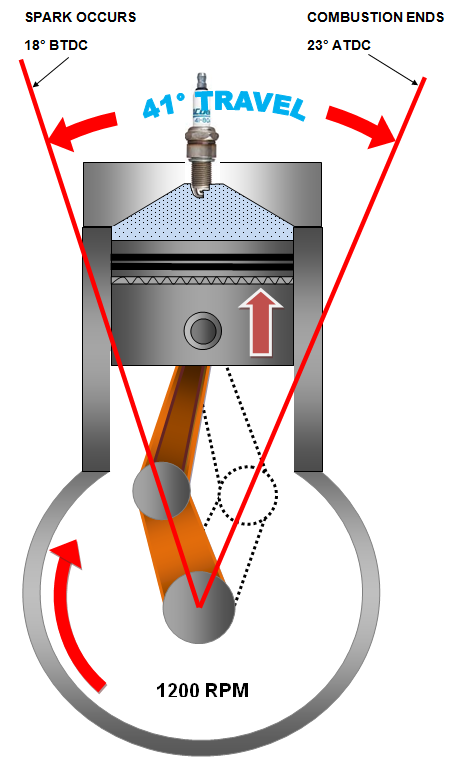To obtain full power from combustion, the maximum pressure must be reached just as the piston passes top dead center, and combustion must be completed by approximately 23 degrees after top dead center.
The
fuel mixture ignited in the combustion chamber does not explode. It burns
rapidly until the fuel is consumed. The time required for complete combustion
is a small fraction of a second. For this reason ignition must take place
before the piston passes top dead center.
As the engine speed increases, the piston moves through the compression stroke more
rapidly, but the burning rate of the fuel mixture remains virtually the same.
To compensate for the high piston speed, ignition must occur earlier in the
compression stroke.
During
the combustion process at 120 rpm, the crankshaft travel through 41 degrees of
rotation, from the point of ignition, to 23 degrees after top dead center. The
spark must occur at 18 degrees before top dead center. The same engine running
at 3600 rpm will require 63 degrees of crankshaft rotation to complete
combustion by 23 degrees after top dead center. This would require that the
spark occur 40 degrees before top dead center. This is why spark
advance is such an important factor in efficient engine operation.
AS ENGINE SPEED INCREASES SPARK MUST BE TIMED EARLIER








0 Comments
Please do not enter any spam link in the comment box.